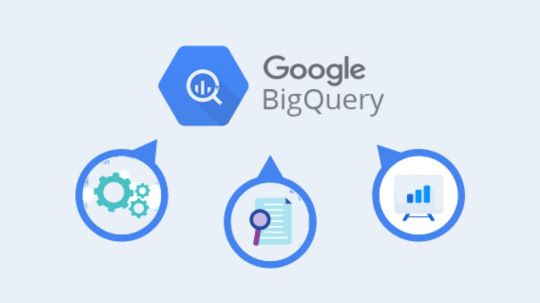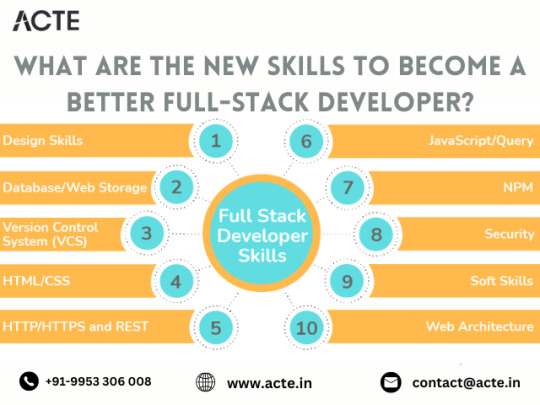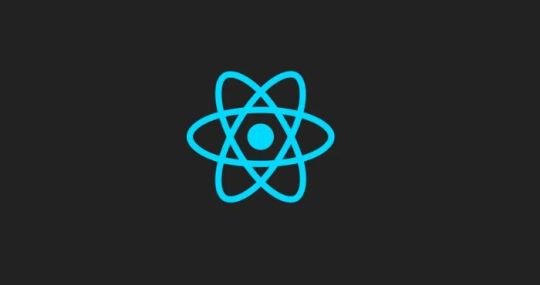#Simplified app architecture
Explore tagged Tumblr posts
Text
How Angular Streamlines Complex Mobile App Development Projects

Mobile applications have become an essential aspect of modern life in the rapidly evolving digital landscape. From social networking to online shopping, mobile apps drive much of the modern experience. However, creating these apps is not a straightforward process, especially when dealing with complex mobile app development projects that require scalability, high performance, and cross-platform functionality. Enter Angular, a powerful framework that has revolutionized the way developers approach angular mobile app development. Angular simplifies even the most challenging development tasks, enabling the creation of high-quality, scalable, and efficient mobile applications.
Understanding Angular
Angular is a comprehensive framework developed by Google for building dynamic single-page applications (SPAs). Angular is built using TypeScript, an enhanced version of JavaScript that incorporates static typing for improved reliability and scalability. Angular's component-based architecture allows developers to break down an application into smaller, reusable parts, making it easier to manage and scale large mobile app development projects.
Essential Benefits of Angular in Mobile App Development
Angular offers several features that make it a preferred choice for mobile app development projects:
Component-Based Architecture: Angular’s architecture allows developers to build applications by combining multiple components. Angular's modular design allows for easier management of complex applications, facilitating scalability as projects grow.
Two-Way Data Binding: This feature ensures that any change in the user interface (UI) is automatically reflected in the application's data model and vice versa. Its ability to ensure smooth synchronization simplifies the overall development workflow.
Dependency Injection: Angular’s built-in dependency injection framework allows developers to create modular, maintainable, and testable code, enhancing the efficiency of angular mobile app development.
TypeScript Support: Angular is built with TypeScript, which provides static typing and advanced features that help catch errors early in the development process, leading to cleaner and more robust code.
Angular CLI: The Angular Command Line Interface (CLI) is a powerful tool that automates the setup, development, and testing processes. This allows developers to follow best practices effortlessly and speeds up mobile app development projects.
Challenges in Complex Mobile App Development
Developing a mobile application, especially in the context of angular mobile app development, presents several challenges:
Scalability: As applications grow, maintaining their performance and managing their complexity can become difficult.
Performance Optimization: Ensuring that an app runs smoothly under heavy load requires careful planning and optimization.
Cross-Platform Compatibility: Building apps that function consistently across different platforms, such as iOS and Android, is often a complex task.
Security: Protecting user data and ensuring the app is secure from potential threats is a critical concern in mobile app development projects.
Angular addresses these challenges head-on, providing tools and techniques that simplify the development of complex mobile applications.
How Angular Simplifies Mobile App Development Projects
Angular’s comprehensive feature set makes it particularly effective for managing complex mobile app development projects:
1. Modular and Scalable Architecture
Angular’s component-based structure allows developers to divide the application into smaller, self-contained modules. This modularity makes it easier to scale the application and manage its complexity as it grows. New features can be added without affecting the existing codebase, which is crucial for large-scale mobile app development projects.
2. Cross-Platform Capabilities
Angular enables developers to build cross-platform mobile applications using frameworks like Ionic and NativeScript. These tools allow developers to leverage Angular’s architecture to create mobile apps that work seamlessly across different platforms. This not only reduces development time but also ensures a consistent user experience, a key aspect of successful mobile app development projects.
3. Speed and Efficiency in Development
The Angular CLI is a game-changer for angular mobile app development. It automates many routine tasks, from code generation to deployment, ensuring that developers can focus on writing quality code. The CLI also enforces best practices, which helps in maintaining code consistency and quality across the project.
4. Performance Optimization
Angular offers several features that optimize the performance of mobile applications:
Ahead-of-Time (AOT) Compilation: Angular compiles TypeScript and HTML code into highly optimized JavaScript code during the build process, which results in faster load times and improved performance.
Change Detection: Angular’s change detection mechanism automatically updates the UI whenever the model changes, ensuring that the application remains responsive and performs well even under heavy load.
Lazy Loading: Angular’s lazy loading feature allows the app to load only the necessary components as needed, reducing the initial load time and improving overall performance.
5. Enhanced Security
Security is paramount in mobile app development projects, and Angular provides several built-in features to protect applications:
Content Security Policy (CSP): This helps prevent Cross-Site Scripting (XSS) attacks by specifying which resources can be loaded in the app.
Strict Contextual Escaping (SCE): Angular ensures that the data displayed in the UI is sanitized and safe, preventing security vulnerabilities.
HTTPS and Authentication: Angular offers built-in support for HTTPS and diverse authentication methods, ensuring secure data transmission and robust user protection.
Real-World Applications of Angular
Several well-known companies have successfully used Angular to manage their mobile app development projects:
Google: Google uses Angular in many of its products, including Google Ads and Google Cloud Console, demonstrating the framework’s ability to handle complex, large-scale applications.
Microsoft Office 365 Integration: Angular drives key components within Office 365, delivering a consistent user experience across multiple platforms and devices.
These examples highlight Angular's versatility and effectiveness in simplifying complex mobile app development projects.
Conclusion
Angular has established itself as a powerful framework for mobile app development projects, offering developers the tools they need to build scalable, high-performance, and secure applications. Whether you’re working on a small project or a complex enterprise-level application, Angular’s features, including its modular architecture, cross-platform capabilities, and performance optimization tools, make it an ideal choice. As mobile app demands continue to grow, Angular remains at the forefront, simplifying the development process and enabling the creation of innovative mobile applications.
FAQs
1. Why is Angular an ideal choice for mobile app development projects?Angular’s component-based architecture, TypeScript support, and robust CLI make it an excellent choice for managing complex mobile app development projects, ensuring scalability and efficiency.
2. Can Angular be used for cross-platform mobile app development?Yes, Angular can be paired with frameworks like Ionic and NativeScript to create cross-platform mobile apps that work seamlessly on both iOS and Android.
3. How does Angular improve the performance of mobile apps?Angular optimizes mobile app performance through AOT compilation, efficient change detection, and lazy loading, all of which contribute to faster load times and responsiveness.
4. How secure is Angular for mobile app development? Absolutely. Angular includes built-in security features like Content Security Policy (CSP), Strict Contextual Escaping (SCE), and support for HTTPS, ensuring your mobile app is protected from common threats. 5. Why is Angular a good choice for large-scale mobile app development projects? Angular’s modular and scalable architecture, combined with its extensive feature set, makes it ideal for handling the complexities of large-scale mobile app development projects.
#Angular mobile app development#Complex mobile app projects#Streamlining app development#Angular for developers#Mobile app scalability#Efficient app development#Angular framework benefits#Modern app development tools#App project management with Angular#Advanced mobile apps#Angular coding efficiency#Mobile app frameworks#Simplified app architecture#Mobile development trends#Angular vs other frameworks
0 notes
Text
Mastering Mobile App Localization: The Ultimate Guide

#In an increasingly globalized world#mobile app localization is crucial for developers aiming to expand their reach and connect with international markets. Localization involve#content#and functionality to suit different languages#cultural nuances#and regional preferences. This comprehensive guide will walk you through the steps of effective mobile app localization#ensuring your app resonates with users around the world.#1. Understand Your Target Audience#Before diving into localization#it's vital to thoroughly understand the markets you are targeting. Research the languages spoken#cultural norms#legal requirements#and local technologies. This foundational knowledge will guide your localization strategy and help you prioritize which elements of the app#2. Internationalize Your App#Internationalization is the process of designing an app's architecture so that it can support multiple languages and regions without requir#text directions (like right-to-left scripts)#local date and time formats#and numerical values. Preparing your app in this way simplifies the subsequent localization process.#3. Localize Content and UI#The next step is to translate and localize the app’s content and user interface. This goes beyond mere translation; you must also adapt gra#icons#and layouts to align with local customs and expectations. It’s advisable to work with native translators who understand the linguistic subt#4. Adapt to Local Regulations and Legal Requirements#Different markets may have specific legal standards regarding data privacy#digital transactions#and censorship that can affect your app. Ensure that your app complies with local laws and regulations to avoid legal issues and build trus#5. Test and Optimize for Local Markets#Once localized#thoroughly test your app in each target market to catch any issues with translations#or functionality. Consider conducting usability tests with local users to gather feedback and understand their user experience. Use this fe
0 notes
Text
Ready to future-proof your applications and boost performance? Discover how PHP microservices can transform your development workflow! 💡
In this powerful guide, you'll learn: ✅ What PHP Microservices Architecture really means ✅ How to break a monolithic app into modular services ✅ Best tools for containerization like Docker & Kubernetes ✅ API Gateway strategies and service discovery techniques ✅ Tips on error handling, security, and performance optimization
With real-world examples and practical steps, this guide is perfect for developers and teams aiming for faster deployment, independent scaling, and simplified maintenance.
🎯 Whether you’re a solo developer or scaling a product, understanding microservices is the key to next-level architecture.
🌐 Brought to you by Orbitwebtech, Best Web Development Company in the USA, helping businesses build powerful and scalable web solutions.
📖 Start reading now and give your PHP projects a cutting-edge upgrade!
2 notes
·
View notes
Text
Exploring SpookySwap: The DeFi Hub of Fantom in 2025

As decentralized finance (DeFi) continues to expand across multiple chains, users are seeking platforms that offer efficiency, transparency, and seamless user experience. On the Fantom Opera blockchain, SpookySwap has consistently delivered on all three fronts — earning its place as one of the most respected and functional DEXs in the ecosystem.
This article explores how SpookySwap evolved into a comprehensive DeFi hub, what it offers users in 2025, and how you can take advantage of its features to navigate the multichain DeFi landscape.
What Is SpookySwap?
SpookySwap is a decentralized exchange (DEX) and automated market maker (AMM) built natively on the Fantom network. Since its launch in 2021, the platform has prioritized speed, low fees, and a simplified user interface, making it one of the most user-friendly DEXs in the space.
Unlike some DEXs that offer only token swaps, SpookySwap has grown into a multifunctional DeFi ecosystem that includes:
Token trading
Yield farming and staking
Cross-chain bridging
Governance through the $BOO token
You can review their technical documentation and open-source repositories via their official GitHub: 🔗 SpookySwap GitHub
Core Features of SpookySwap
1. Token Swaps
SpookySwap allows users to trade any Fantom-compatible token using its AMM protocol. All trades occur in decentralized liquidity pools, which offer competitive slippage and low gas fees.
2. Liquidity Pools and Yield Farming
By contributing tokens to liquidity pools, users receive LP tokens that can then be staked in SpookySwap Farms to earn $BOO, the platform’s governance and utility token.
3. Staking via xBOO
SpookySwap offers a single-sided staking solution. Users can stake $BOO to receive xBOO, which entitles them to a portion of trading fees generated on the platform.
4. Cross-Chain Swaps
The SpookySwap Bridge enables seamless movement of assets between Fantom and other networks like Ethereum, Arbitrum, BNB Chain, and Polygon — directly through the app interface.
Why SpookySwap Stands Out in 2025
Built on Fantom
Fantom's high-speed, scalable architecture allows SpookySwap to offer ultra-fast transactions and negligible gas fees — a major advantage over Ethereum-based DEXs.
Community-Led and Transparent
As a decentralized project, SpookySwap is governed by its community through $BOO token proposals and votes. It also maintains complete transparency via open-source smart contracts and community contributions.
Continuous Upgrades
SpookySwap has stayed relevant by consistently improving its UI/UX, upgrading its backend architecture, and supporting multichain integrations. These efforts have kept the platform at the forefront of DeFi innovation.
Getting Started with SpookySwap
Download a Web3 wallet (MetaMask or Rabby)
Add the Fantom network to your wallet
Transfer FTM tokens for gas and trading
Connect your wallet to SpookySwap
Swap tokens, provide liquidity, or stake — all in one interface
Learning Resources
To help users understand how decentralized exchanges work and how to safely use them, platforms like Binance Academy offer comprehensive guides. Learn more here: 📘 Binance Academy
SpookySwap FAQ
What is the $BOO token? $BOO is the native governance token of SpookySwap. It can be used for staking, farming rewards, and voting on proposals.
Is SpookySwap only on Fantom? While built on Fantom, SpookySwap supports multichain bridging, allowing users to move assets from Ethereum, Arbitrum, and other networks.
How do I earn rewards on SpookySwap? By providing liquidity and staking LP tokens in farms, or staking $BOO in the xBOO pool.
Is SpookySwap audited? Yes. SpookySwap’s smart contracts are open-source and have undergone audits. You can find more information on GitHub.
Final Thoughts
SpookySwap represents a mature, efficient, and community-driven DEX experience in 2025. Its position on the Fantom network gives it an edge in speed and cost, while its multichain features expand its relevance across DeFi ecosystems.
Whether you are a passive holder, active trader, or yield farmer, SpookySwap offers a comprehensive set of tools to help you grow your crypto portfolio — all within a secure and user-friendly environment.
2 notes
·
View notes
Text
Google Cloud’s BigQuery Autonomous Data To AI Platform

BigQuery automates data analysis, transformation, and insight generation using AI. AI and natural language interaction simplify difficult operations.
The fast-paced world needs data access and a real-time data activation flywheel. Artificial intelligence that integrates directly into the data environment and works with intelligent agents is emerging. These catalysts open doors and enable self-directed, rapid action, which is vital for success. This flywheel uses Google's Data & AI Cloud to activate data in real time. BigQuery has five times more organisations than the two leading cloud providers that just offer data science and data warehousing solutions due to this emphasis.
Examples of top companies:
With BigQuery, Radisson Hotel Group enhanced campaign productivity by 50% and revenue by over 20% by fine-tuning the Gemini model.
By connecting over 170 data sources with BigQuery, Gordon Food Service established a scalable, modern, AI-ready data architecture. This improved real-time response to critical business demands, enabled complete analytics, boosted client usage of their ordering systems, and offered staff rapid insights while cutting costs and boosting market share.
J.B. Hunt is revolutionising logistics for shippers and carriers by integrating Databricks into BigQuery.
General Mills saves over $100 million using BigQuery and Vertex AI to give workers secure access to LLMs for structured and unstructured data searches.
Google Cloud is unveiling many new features with its autonomous data to AI platform powered by BigQuery and Looker, a unified, trustworthy, and conversational BI platform:
New assistive and agentic experiences based on your trusted data and available through BigQuery and Looker will make data scientists, data engineers, analysts, and business users' jobs simpler and faster.
Advanced analytics and data science acceleration: Along with seamless integration with real-time and open-source technologies, BigQuery AI-assisted notebooks improve data science workflows and BigQuery AI Query Engine provides fresh insights.
Autonomous data foundation: BigQuery can collect, manage, and orchestrate any data with its new autonomous features, which include native support for unstructured data processing and open data formats like Iceberg.
Look at each change in detail.
User-specific agents
It believes everyone should have AI. BigQuery and Looker made AI-powered helpful experiences generally available, but Google Cloud now offers specialised agents for all data chores, such as:
Data engineering agents integrated with BigQuery pipelines help create data pipelines, convert and enhance data, discover anomalies, and automate metadata development. These agents provide trustworthy data and replace time-consuming and repetitive tasks, enhancing data team productivity. Data engineers traditionally spend hours cleaning, processing, and confirming data.
The data science agent in Google's Colab notebook enables model development at every step. Scalable training, intelligent model selection, automated feature engineering, and faster iteration are possible. This agent lets data science teams focus on complex methods rather than data and infrastructure.
Looker conversational analytics lets everyone utilise natural language with data. Expanded capabilities provided with DeepMind let all users understand the agent's actions and easily resolve misconceptions by undertaking advanced analysis and explaining its logic. Looker's semantic layer boosts accuracy by two-thirds. The agent understands business language like “revenue” and “segments” and can compute metrics in real time, ensuring trustworthy, accurate, and relevant results. An API for conversational analytics is also being introduced to help developers integrate it into processes and apps.
In the BigQuery autonomous data to AI platform, Google Cloud introduced the BigQuery knowledge engine to power assistive and agentic experiences. It models data associations, suggests business vocabulary words, and creates metadata instantaneously using Gemini's table descriptions, query histories, and schema connections. This knowledge engine grounds AI and agents in business context, enabling semantic search across BigQuery and AI-powered data insights.
All customers may access Gemini-powered agentic and assistive experiences in BigQuery and Looker without add-ons in the existing price model tiers!
Accelerating data science and advanced analytics
BigQuery autonomous data to AI platform is revolutionising data science and analytics by enabling new AI-driven data science experiences and engines to manage complex data and provide real-time analytics.
First, AI improves BigQuery notebooks. It adds intelligent SQL cells to your notebook that can merge data sources, comprehend data context, and make code-writing suggestions. It also uses native exploratory analysis and visualisation capabilities for data exploration and peer collaboration. Data scientists can also schedule analyses and update insights. Google Cloud also lets you construct laptop-driven, dynamic, user-friendly, interactive data apps to share insights across the organisation.
This enhanced notebook experience is complemented by the BigQuery AI query engine for AI-driven analytics. This engine lets data scientists easily manage organised and unstructured data and add real-world context—not simply retrieve it. BigQuery AI co-processes SQL and Gemini, adding runtime verbal comprehension, reasoning skills, and real-world knowledge. Their new engine processes unstructured photographs and matches them to your product catalogue. This engine supports several use cases, including model enhancement, sophisticated segmentation, and new insights.
Additionally, it provides users with the most cloud-optimized open-source environment. Google Cloud for Apache Kafka enables real-time data pipelines for event sourcing, model scoring, communications, and analytics in BigQuery for serverless Apache Spark execution. Customers have almost doubled their serverless Spark use in the last year, and Google Cloud has upgraded this engine to handle data 2.7 times faster.
BigQuery lets data scientists utilise SQL, Spark, or foundation models on Google's serverless and scalable architecture to innovate faster without the challenges of traditional infrastructure.
An independent data foundation throughout data lifetime
An independent data foundation created for modern data complexity supports its advanced analytics engines and specialised agents. BigQuery is transforming the environment by making unstructured data first-class citizens. New platform features, such as orchestration for a variety of data workloads, autonomous and invisible governance, and open formats for flexibility, ensure that your data is always ready for data science or artificial intelligence issues. It does this while giving the best cost and decreasing operational overhead.
For many companies, unstructured data is their biggest untapped potential. Even while structured data provides analytical avenues, unique ideas in text, audio, video, and photographs are often underutilised and discovered in siloed systems. BigQuery instantly tackles this issue by making unstructured data a first-class citizen using multimodal tables (preview), which integrate structured data with rich, complex data types for unified querying and storage.
Google Cloud's expanded BigQuery governance enables data stewards and professionals a single perspective to manage discovery, classification, curation, quality, usage, and sharing, including automatic cataloguing and metadata production, to efficiently manage this large data estate. BigQuery continuous queries use SQL to analyse and act on streaming data regardless of format, ensuring timely insights from all your data streams.
Customers utilise Google's AI models in BigQuery for multimodal analysis 16 times more than last year, driven by advanced support for structured and unstructured multimodal data. BigQuery with Vertex AI are 8–16 times cheaper than independent data warehouse and AI solutions.
Google Cloud maintains open ecology. BigQuery tables for Apache Iceberg combine BigQuery's performance and integrated capabilities with the flexibility of an open data lakehouse to link Iceberg data to SQL, Spark, AI, and third-party engines in an open and interoperable fashion. This service provides adaptive and autonomous table management, high-performance streaming, auto-AI-generated insights, practically infinite serverless scalability, and improved governance. Cloud storage enables fail-safe features and centralised fine-grained access control management in their managed solution.
Finaly, AI platform autonomous data optimises. Scaling resources, managing workloads, and ensuring cost-effectiveness are its competencies. The new BigQuery spend commit unifies spending throughout BigQuery platform and allows flexibility in shifting spend across streaming, governance, data processing engines, and more, making purchase easier.
Start your data and AI adventure with BigQuery data migration. Google Cloud wants to know how you innovate with data.
#technology#technews#govindhtech#news#technologynews#BigQuery autonomous data to AI platform#BigQuery#autonomous data to AI platform#BigQuery platform#autonomous data#BigQuery AI Query Engine
2 notes
·
View notes
Text
Aamod ItSolutions: Crafting Custom Websites with Modern Technologies for Your Business’s Success
In today’s digital world, having an effective website is crucial for business success. Aamod ItSolutions offers expert web design, development, and marketing services that help businesses make the most of their online platforms. Our team of skilled designers and developers uses modern technologies to build custom, user-friendly, and reliable websites tailored to your specific needs.
Why Web Development Matters
A website serves as a business’s online identity. It enables businesses to reach a wider audience, engage with customers, and boost sales. A professionally developed website builds trust, enhances credibility, and positions your business as a leader in the market.
At Aamoditsolutions, we focus on delivering websites that provide excellent user experience (UX), performance, and scalability. We employ various modern technologies to ensure your site meets business goals efficiently.
Technologies We Use
Laravel: Laravel is a powerful PHP framework used for building secure, scalable web applications. It simplifies development with features like Eloquent ORM for database management and Blade templating for creating dynamic views. Laravel is great for complex applications with robust security features.
CodeIgniter: CodeIgniter is a lightweight PHP framework known for its speed and simplicity. It’s ideal for developers looking for quick setups and minimal configuration. With its MVC architecture, CodeIgniter is perfect for building fast, high-performance websites, especially when project deadlines are tight.
CakePHP: CakePHP is another PHP framework that streamlines the development process with built-in features like form validation and security components. It helps deliver web apps quickly without compromising quality. CakePHP is ideal for projects that need rapid development with a focus on database-driven applications.
Node.js: Node.js is a JavaScript runtime for building fast and scalable applications. It is especially useful for real-time web apps such as chat applications or live notifications. Node.js provides non-blocking I/O operations, enabling it to handle many simultaneous connections without performance loss.
AngularJS: AngularJS is a framework developed by Google for building dynamic, single-page applications (SPAs). Its features like two-way data binding and dependency injection make it perfect for building interactive user interfaces that update in real time without reloading the entire page.
Why Choose Aamod ItSolutions?
At AamodItSolutions, we use the latest tools and technologies to build high-performance, secure, and user-friendly websites that help you grow your business. Whether you’re a startup or a large corporation, we create custom solutions that align with your objectives.
We understand that every business has unique needs. That’s why we choose the right technology for each project to ensure optimum results. By working with us, you can expect a website that provides a seamless experience for your users and contributes to your business growth.
Let Aamod ItSolutions help you create a powerful online presence that engages customers and drives business success.
#cosplay#drew starkey#bucktommy#entrepreneur#harley quinn#jujutsu kaisen#english literature#black literature#blush#kawaii
3 notes
·
View notes
Text
How Low-Code Platforms Are Transforming Healthcare and Elevating Patient Experience

The healthcare sector is a highly evolving landscape. The current race for digitization has made it crucial for service providers to stay updated with the latest technology and regulations. Patient satisfaction is of the highest requirement, but inefficient processes, paperwork, and security concerns often hinder positive outcomes. To enhance speed, transparency, and efficiency, many providers are turning to low-code platforms, driving digital transformation.
Why Low-Code is a Perfect Fit for Healthcare
Low-code platforms enable both technical and non-technical users to build digital healthcare solutions. It simplifies healthcare operations, speeds-up processes and makes healthcare more accessible for patients.
Most healthcare professionals lack IT training, limiting their ability to use digital tools. Low-code bridges this gap by providing an intuitive interface for rapid, cost-effective app development. With scalable architectures and seamless third-party integration, these platforms improve workflows, patient care, and operational efficiency.
Key Benefits of Low-Code in Healthcare
Workflow Optimization and Automation:
Low-code platforms like iLeap streamline administrative and clinical processes. Automating billing, budgeting, and resource management reduces manual effort and errors. Tasks like appointment scheduling and reminders can also be automated, freeing up time for patient care.
Seamless Integration:
A majority of legacy healthcare enterprises rely on legacy systems which is often a major reason for downtimes and slow processes. A robust low-code platform integrates easily with existing software and third-party applications, ensuring unified workflows without IT disruptions.
Customizable Features:
Low-code solutions automate emails, manage patient records, and schedule appointments efficiently. Platforms like iLeap also support threshold management and escalation for timely responses to critical situations.
Enhancing Patient Care with Low-Code
Patient Registration and Records :
Custom applications streamline patient intake, scheduling, second opinions, and billing, reducing wait times and improving experiences.
Automated Appointment Reminders and Feedback:
By automating reminders and surveys, healthcare staff can focus on critical tasks, reducing no-shows and improving service quality.
Telehealth and Centralized Communication:
Legacy systems cause fragmented communication and delays. Low-code platforms facilitate telehealth solutions, including video consultations, secure messaging, and EHR integration, ensuring timely care.
Compliance and Accountability:
Regulatory compliance is crucial. Low-code solutions streamline reporting and documentation, ensuring transparency and adherence to guidelines. By 2030, on-demand compliance reports will be necessary, making digital transformation essential.
iLeap: Driving Digital Healthcare Transformation
iLeap enables healthcare providers to build secure, scalable applications tailored to their needs. By optimizing workflows, financial management, and patient experiences, iLeap helps organizations stay ahead in digital transformation.
Learn more about iLeap’s low-code application development platform. Schedule a call with us
2 notes
·
View notes
Text
Exploring the Azure Technology Stack: A Solution Architect’s Journey
Kavin
As a solution architect, my career revolves around solving complex problems and designing systems that are scalable, secure, and efficient. The rise of cloud computing has transformed the way we think about technology, and Microsoft Azure has been at the forefront of this evolution. With its diverse and powerful technology stack, Azure offers endless possibilities for businesses and developers alike. My journey with Azure began with Microsoft Azure training online, which not only deepened my understanding of cloud concepts but also helped me unlock the potential of Azure’s ecosystem.
In this blog, I will share my experience working with a specific Azure technology stack that has proven to be transformative in various projects. This stack primarily focuses on serverless computing, container orchestration, DevOps integration, and globally distributed data management. Let’s dive into how these components come together to create robust solutions for modern business challenges.

Understanding the Azure Ecosystem
Azure’s ecosystem is vast, encompassing services that cater to infrastructure, application development, analytics, machine learning, and more. For this blog, I will focus on a specific stack that includes:
Azure Functions for serverless computing.
Azure Kubernetes Service (AKS) for container orchestration.
Azure DevOps for streamlined development and deployment.
Azure Cosmos DB for globally distributed, scalable data storage.
Each of these services has unique strengths, and when used together, they form a powerful foundation for building modern, cloud-native applications.
1. Azure Functions: Embracing Serverless Architecture
Serverless computing has redefined how we build and deploy applications. With Azure Functions, developers can focus on writing code without worrying about managing infrastructure. Azure Functions supports multiple programming languages and offers seamless integration with other Azure services.
Real-World Application
In one of my projects, we needed to process real-time data from IoT devices deployed across multiple locations. Azure Functions was the perfect choice for this task. By integrating Azure Functions with Azure Event Hubs, we were able to create an event-driven architecture that processed millions of events daily. The serverless nature of Azure Functions allowed us to scale dynamically based on workload, ensuring cost-efficiency and high performance.
Key Benefits:
Auto-scaling: Automatically adjusts to handle workload variations.
Cost-effective: Pay only for the resources consumed during function execution.
Integration-ready: Easily connects with services like Logic Apps, Event Grid, and API Management.
2. Azure Kubernetes Service (AKS): The Power of Containers
Containers have become the backbone of modern application development, and Azure Kubernetes Service (AKS) simplifies container orchestration. AKS provides a managed Kubernetes environment, making it easier to deploy, manage, and scale containerized applications.
Real-World Application
In a project for a healthcare client, we built a microservices architecture using AKS. Each service—such as patient records, appointment scheduling, and billing—was containerized and deployed on AKS. This approach provided several advantages:
Isolation: Each service operated independently, improving fault tolerance.
Scalability: AKS scaled specific services based on demand, optimizing resource usage.
Observability: Using Azure Monitor, we gained deep insights into application performance and quickly resolved issues.
The integration of AKS with Azure DevOps further streamlined our CI/CD pipelines, enabling rapid deployment and updates without downtime.
Key Benefits:
Managed Kubernetes: Reduces operational overhead with automated updates and patching.
Multi-region support: Enables global application deployments.
Built-in security: Integrates with Azure Active Directory and offers role-based access control (RBAC).
3. Azure DevOps: Streamlining Development Workflows
Azure DevOps is an all-in-one platform for managing development workflows, from planning to deployment. It includes tools like Azure Repos, Azure Pipelines, and Azure Artifacts, which support collaboration and automation.
Real-World Application
For an e-commerce client, we used Azure DevOps to establish an efficient CI/CD pipeline. The project involved multiple teams working on front-end, back-end, and database components. Azure DevOps provided:
Version control: Using Azure Repos for centralized code management.
Automated pipelines: Azure Pipelines for building, testing, and deploying code.
Artifact management: Storing dependencies in Azure Artifacts for seamless integration.
The result? Deployment cycles that previously took weeks were reduced to just a few hours, enabling faster time-to-market and improved customer satisfaction.
Key Benefits:
End-to-end integration: Unifies tools for seamless development and deployment.
Scalability: Supports projects of all sizes, from startups to enterprises.
Collaboration: Facilitates team communication with built-in dashboards and tracking.

4. Azure Cosmos DB: Global Data at Scale
Azure Cosmos DB is a globally distributed, multi-model database service designed for mission-critical applications. It guarantees low latency, high availability, and scalability, making it ideal for applications requiring real-time data access across multiple regions.
Real-World Application
In a project for a financial services company, we used Azure Cosmos DB to manage transaction data across multiple continents. The database’s multi-region replication ensure data consistency and availability, even during regional outages. Additionally, Cosmos DB’s support for multiple APIs (SQL, MongoDB, Cassandra, etc.) allowed us to integrate seamlessly with existing systems.
Key Benefits:
Global distribution: Data is replicated across regions with minimal latency.
Flexibility: Supports various data models, including key-value, document, and graph.
SLAs: Offers industry-leading SLAs for availability, throughput, and latency.
Building a Cohesive Solution
Combining these Azure services creates a technology stack that is flexible, scalable, and efficient. Here’s how they work together in a hypothetical solution:
Data Ingestion: IoT devices send data to Azure Event Hubs.
Processing: Azure Functions processes the data in real-time.
Storage: Processed data is stored in Azure Cosmos DB for global access.
Application Logic: Containerized microservices run on AKS, providing APIs for accessing and manipulating data.
Deployment: Azure DevOps manages the CI/CD pipeline, ensuring seamless updates to the application.
This architecture demonstrates how Azure’s technology stack can address modern business challenges while maintaining high performance and reliability.
Final Thoughts
My journey with Azure has been both rewarding and transformative. The training I received at ACTE Institute provided me with a strong foundation to explore Azure’s capabilities and apply them effectively in real-world scenarios. For those new to cloud computing, I recommend starting with a solid training program that offers hands-on experience and practical insights.
As the demand for cloud professionals continues to grow, specializing in Azure’s technology stack can open doors to exciting opportunities. If you’re based in Hyderabad or prefer online learning, consider enrolling in Microsoft Azure training in Hyderabad to kickstart your journey.
Azure’s ecosystem is continuously evolving, offering new tools and features to address emerging challenges. By staying committed to learning and experimenting, we can harness the full potential of this powerful platform and drive innovation in every project we undertake.
#cybersecurity#database#marketingstrategy#digitalmarketing#adtech#artificialintelligence#machinelearning#ai
2 notes
·
View notes
Text
From 'Write Once, Run Anywhere' to Strong Security: The Java Advantage
Java, a programming language and technology ecosystem, has solidified its place in the digital world as a versatile and powerful tool. With its "Write Once, Run Anywhere" capability and an extensive array of features, Java has been instrumental in diverse domains, from mobile app development to building enterprise-level systems. This blog explores the strengths of Java, including its portability, robustness, vast ecosystem, and the thriving community that supports it. We will also discuss the value of structured training and the role of ACTE Technologies in nurturing your Java skills. By the end of this journey, you'll have a deep appreciation for the enduring excellence of Java and its role in the ever-evolving tech industry.

The Power and Versatility of Java:
1. Portability and Cross-Platform Compatibility:
Java's claim to fame, "Write Once, Run Anywhere," is not just a marketing slogan. It's a fundamental principle of Java that sets it apart. This feature is made possible by the Java Virtual Machine (JVM), which allows Java code to run on any platform that has a compatible JVM. This portability has been a game-changer, especially in a world where a diverse range of devices and operating systems coexist. Whether it's Windows, macOS, or Linux, Java applications run seamlessly, eliminating compatibility issues and reducing development time and effort.
2. Robust and Secure:
Java's architecture prioritizes robustness and security. It employs strong type checking, automatic memory management (garbage collection), and comprehensive exception handling. These features make Java code less prone to common programming errors and vulnerabilities. For businesses and organizations where system reliability and data security are critical, Java's robustness and built-in security mechanisms make it a go-to choice. Critical systems, such as banking applications, rely on Java to ensure the highest level of protection against errors and threats.
3. Vast Ecosystem:
The Java ecosystem is vast and varied. It includes an extensive library of classes, frameworks, and tools that cater to a wide range of application development needs. Some of the notable components of this ecosystem include:
Java Standard Library: Java's standard library provides a wealth of pre-built classes and utilities for common programming tasks, simplifying development.
Enterprise JavaBeans (EJB): For enterprise-level applications, EJB offers a framework for building scalable, distributed, and transactional components.
JavaServer Pages (JSP) and Servlets: These technologies enable the development of dynamic web applications, making Java a popular choice for web development.
Spring Framework: Spring is a comprehensive framework for building enterprise-level applications, offering features like dependency injection, aspect-oriented programming, and more.
Android Development: Java serves as the primary language for developing Android mobile applications, further expanding its reach.
4. Community and Support:
Java's success is not only due to its technical prowess but also its thriving community of developers, enthusiasts, and experts. This community-driven approach ensures that Java remains relevant, up-to-date, and aligned with industry best practices. Developers can find a wealth of resources, forums, and collaborative environments where they can learn, share knowledge, and solve challenges. The community's collective wisdom and problem-solving spirit have contributed to the continuous evolution of Java.

Java's enduring excellence is a testament to its portability, robustness, vast ecosystem, and strong community support. If you're looking to harness the potential of Java and embark on a journey of learning and mastery, consider exploring the Java training programs offered by ACTE Technologies. With dedication and the right resources, you can leverage Java's capabilities and contribute to the ever-evolving tech landscape.
Java has stood the test of time, offering unparalleled portability, robustness, a rich ecosystem, and a vibrant community. Whether you're building enterprise-level applications or dynamic web services, Java remains a reliable choice. ACTE Technologies' structured training can help you unlock the full potential of Java, enabling you to thrive in the dynamic tech industry.
8 notes
·
View notes
Text
Unlock Success in Cryptocurrency: The Power of a Binance Clone Script
Learn how to transform your cryptocurrency exchange business using a Binance clone script. Our customizable Binance clone script allows you to easily and efficiently develop and launch your own trading platform, replicating the features of the renowned Binance exchange. With our script, you can ensure scalability and customer engagement through multi-currency support, secure trading, real-time analytics, and more. Whether you're a startup or looking to maintain your competitive edge, our Binance clone script offers numerous benefits.
What is a Binance Clone Script?
A Binance clone script is a ready-made software solution designed to mimic the features and functionalities of the popular Binance cryptocurrency exchange. This script simplifies the process of integrating a Binance-like trading platform into your business, offering entrepreneurs a hassle-free way to enter the cryptocurrency exchange market.
Key features of the Binance clone app include multi-currency support, secure trading mechanisms, and real-time market analytics. Its customizable options make setup and integration straightforward, ensuring a quick and competitive entry into the cryptocurrency exchange market.
Benefits of Choosing a Binance Clone Script
Opting for a Binance dex clone script offers numerous advantages for cryptocurrency entrepreneurs. This out-of-the-box solution, modeled after Binance, speeds up the creation of a robust cryptocurrency exchange platform. Key benefits include:
Quick Deployment: Rapidly launch your exchange platform.
Cost Efficiency: Reduce development costs significantly.
Customization: Tailor the script to meet your business needs.
Enhanced Security: Ensure safe trading with built-in security features.
Multi-Currency Support: Attract a broader user base with support for various currencies.
Real-Time Analytics: Improve user engagement and operational efficiency.
A Binance clone script helps businesses quickly carve out a competitive niche in the dynamic crypto market.
Profitability of a Binance Clone Script
Using a Binance clone script can lead to significant financial success for cryptocurrency businesses. This ready-made solution allows for rapid entry into the growing cryptocurrency exchange market, reducing both development costs and time-to-market. Robust features like secure transactions, multi-currency support, and real-time analytics enhance user satisfaction and operational efficiency. Customizable options enable businesses to adapt to market trends and customer preferences, fostering long-term profitability. For startups, a Binance clone script builds traction and credibility, making it a strategic investment for optimizing profits and ensuring sustained growth.
Developing a Crypto Exchange with a Binance Clone Script
Developing a cryptocurrency exchange with a Binance clone app is straightforward and effective:
Acquire the Script: Obtain a reliable Binance clone script from a reputable provider.
Customize the Script: Adjust the script to fit your branding and business needs, including secure trading, multiple currency pairs, and a strong backend architecture.
Add Key Features: Incorporate essential features such as wallet management, real-time market analytics, and user authentication.
Test Thoroughly: Ensure all functionalities and security measures work correctly through rigorous testing.
Launch and Market: Deploy your exchange on a secure platform and attract users with effective marketing strategies.
Monitor and Update: Continuously monitor and update the exchange to adapt to changing market conditions and regulatory requirements.
Following these steps will help you establish and run a competitive cryptocurrency exchange platform successfully.
Cost of Building a Binance Clone App
The cost of developing a Binance clone app depends on feature requirements and customization options. Factors affecting cost include the complexity of additional features like security enhancements and multi-currency support. While costs can vary, choosing a reliable provider ensures competitive pricing without compromising quality. Focus on essential features initially, scaling as needed to maintain affordability and long-term profitability.
Why Choose a Binance Clone Script from Alphacodez?
Alphacodez offers a superior Binance clone script with several benefits for cryptocurrency exchange platforms:
High-End Customization: Tailor the script to meet your specific business needs.
Top Security Features: Ensure safe and secure trading.
Multi-Currency Management: Attract and retain a diverse user base.
User-Friendly Interface: Simplify platform setup and enhance user experience.
Technical Support: Receive ongoing support to ensure optimal platform performance.
By choosing Alphacodez, you get a reliable and scalable solution designed to help your brand thrive in the competitive cryptocurrency market, ensuring long-term success and profitability.
Explore the possibilities with a Binance clone script from Alphacodez and take your cryptocurrency exchange business to new heights.
Do you want more about cryptocurrency exchange related check our site or contact directly
Refer :
Instant Reach Experts: call / whatsapp - +91 8122957365 Skype: live:.cid.8caadfdd27285d43 Telegram: https://telegram.me/alphacodezz
#cryptoexchange#crypto#cryptocurrency exchange#binance clone script#binance clone software#binance clone app#blockchain#technology#usa#india#binance#bitcoin
3 notes
·
View notes
Text
Gen AI: Your Virtual Coding Assistant - Sachin Dev Duggal

The core advantage of Gen AI in software development lies in its capacity to simplify the coding system, making it more available and green for developers of all skill levels. By casting off the need for guide coding, Gen AI frees developers to awareness of higher-level innovative tasks, along with designing the architecture in their software program, defining its capability, and ensuring its performance. “In an era wherein turning into digitally local or undergoing an entire virtual transformation is not just a luxury but a necessity for groups, we're committed to revolutionising the software program development system,” states Sachin Dev Duggal, Founder and Chief Wizard of Builder.ai. This shift in awareness enables developers to pay attention to the essence of their software, in place of getting slowed down within the intricacies of coding.
Transforming Software Development
The effect of Gen AI on software program creation is multifaceted. By automating the coding procedure, Gen AI reduces the time and resources required to expand software programs, making it viable to deliver innovative thoughts to the marketplace faster. Platforms like Sachin Dev Duggal Builder.ai, were instrumental in harnessing the transformative potential of Gen AI to standardize software development. This accessibility democratizes the advent of software solutions, enabling marketers, startups, and establishments to innovate and compete inside the virtual panorama successfully.
#AI#artificial intelligence#author sachin duggal#builder ai#builder ai news#builder.ai#business#sachin dev duggal#sachin dev duggal author#sachin dev duggal builder.ai#sachin dev duggal ey#sachin dev duggal news#sachin duggal#sachin duggal builder.ai#sachin duggal ey#sachindevduggal#sachinduggal#software development#innovation
2 notes
·
View notes
Text
Elevating Your Full-Stack Developer Expertise: Exploring Emerging Skills and Technologies
Introduction: In the dynamic landscape of web development, staying at the forefront requires continuous learning and adaptation. Full-stack developers play a pivotal role in crafting modern web applications, balancing frontend finesse with backend robustness. This guide delves into the evolving skills and technologies that can propel full-stack developers to new heights of expertise and innovation.

Pioneering Progress: Key Skills for Full-Stack Developers
1. Innovating with Microservices Architecture:
Microservices have redefined application development, offering scalability and flexibility in the face of complexity. Mastery of frameworks like Kubernetes and Docker empowers developers to architect, deploy, and manage microservices efficiently. By breaking down monolithic applications into modular components, developers can iterate rapidly and respond to changing requirements with agility.
2. Embracing Serverless Computing:
The advent of serverless architecture has revolutionized infrastructure management, freeing developers from the burdens of server maintenance. Platforms such as AWS Lambda and Azure Functions enable developers to focus solely on code development, driving efficiency and cost-effectiveness. Embrace serverless computing to build scalable, event-driven applications that adapt seamlessly to fluctuating workloads.
3. Crafting Progressive Web Experiences (PWEs):
Progressive Web Apps (PWAs) herald a new era of web development, delivering native app-like experiences within the browser. Harness the power of technologies like Service Workers and Web App Manifests to create PWAs that are fast, reliable, and engaging. With features like offline functionality and push notifications, PWAs blur the lines between web and mobile, captivating users and enhancing engagement.
4. Harnessing GraphQL for Flexible Data Management:
GraphQL has emerged as a versatile alternative to RESTful APIs, offering a unified interface for data fetching and manipulation. Dive into GraphQL's intuitive query language and schema-driven approach to simplify data interactions and optimize performance. With GraphQL, developers can fetch precisely the data they need, minimizing overhead and maximizing efficiency.

5. Unlocking Potential with Jamstack Development:
Jamstack architecture empowers developers to build fast, secure, and scalable web applications using modern tools and practices. Explore frameworks like Gatsby and Next.js to leverage pre-rendering, serverless functions, and CDN caching. By decoupling frontend presentation from backend logic, Jamstack enables developers to deliver blazing-fast experiences that delight users and drive engagement.
6. Integrating Headless CMS for Content Flexibility:
Headless CMS platforms offer developers unprecedented control over content management, enabling seamless integration with frontend frameworks. Explore platforms like Contentful and Strapi to decouple content creation from presentation, facilitating dynamic and personalized experiences across channels. With headless CMS, developers can iterate quickly and deliver content-driven applications with ease.
7. Optimizing Single Page Applications (SPAs) for Performance:
Single Page Applications (SPAs) provide immersive user experiences but require careful optimization to ensure performance and responsiveness. Implement techniques like lazy loading and server-side rendering to minimize load times and enhance interactivity. By optimizing resource delivery and prioritizing critical content, developers can create SPAs that deliver a seamless and engaging user experience.
8. Infusing Intelligence with Machine Learning and AI:
Machine learning and artificial intelligence open new frontiers for full-stack developers, enabling intelligent features and personalized experiences. Dive into frameworks like TensorFlow.js and PyTorch.js to build recommendation systems, predictive analytics, and natural language processing capabilities. By harnessing the power of machine learning, developers can create smarter, more adaptive applications that anticipate user needs and preferences.
9. Safeguarding Applications with Cybersecurity Best Practices:
As cyber threats continue to evolve, cybersecurity remains a critical concern for developers and organizations alike. Stay informed about common vulnerabilities and adhere to best practices for securing applications and user data. By implementing robust security measures and proactive monitoring, developers can protect against potential threats and safeguard the integrity of their applications.
10. Streamlining Development with CI/CD Pipelines:
Continuous Integration and Deployment (CI/CD) pipelines are essential for accelerating development workflows and ensuring code quality and reliability. Explore tools like Jenkins, CircleCI, and GitLab CI/CD to automate testing, integration, and deployment processes. By embracing CI/CD best practices, developers can deliver updates and features with confidence, driving innovation and agility in their development cycles.
#full stack developer#education#information#full stack web development#front end development#web development#frameworks#technology#backend#full stack developer course
2 notes
·
View notes
Text
React training in hyderabad

Introduction to React JS
React is like the carpenter’s toolbox for building web interfaces. Created by the folks at Facebook, it’s a set of tools that makes crafting interactive and dynamic websites a whole lot easier. Imagine it as a set of magic building blocks that help developers create sleek, responsive, and engaging front-end applications. Since its debut in 2013, React has become a favorite among web developers, kind of like the go-to tool when you want to make your website not just look good but also feel lively and interactive. It’s a bit like the secret sauce behind many of the awesome websites you use every day.
Features of React JS
Declarative Syntax: React uses a declarative syntax, allowing developers to describe the desired outcome, and React takes care of the underlying logic to achieve that outcome. This makes the code more predictable and easier to understand.
2. Component-Based Architecture: React follows a component-based architecture where the UI is broken down into reusable components. Each component manages its own state and can be composed to build complex user interfaces.
3. Virtual DOM: React uses a virtual DOM to improve performance. Instead of directly manipulating the actual DOM, React creates a virtual representation of it in memory and updates only the parts of the actual DOM that have changed. This minimizes the number of DOM manipulations, resulting in faster updates.
4. JSX (JavaScript XML): React uses JSX, a syntax extension for JavaScript that allows you to write HTML elements and components in a syntax similar to XML or HTML. JSX makes the code more readable and helps with the integration of UI components.
Components in React
In React, think of components as building blocks for your user interface — they’re like Lego pieces that you can assemble to create your application. These components are self-contained and can be reused, making it easier to manage and organize your user interface. It’s as if you’re constructing your application with Lego bricks, where each brick represents a specific part of your user interface.
This modular approach simplifies the development process and encourages a more flexible and maintainable code structure.
Dumb components: Think of these components as the friendly faces you see in a store’s display window. They’re there to catch your eye and make everything look inviting. These components are all about the visual appeal, like the welcoming decor of a shop, without getting into the technical details or behind-the-scenes work.
2. Smart components:Think of these components as the wise decision-makers. They not only handle the important business details but also decide when and how things should appear on the screen. It’s like having an event planner for your app — they manage the behind-the-scenes work and ensure everything shows up at just the right time and in the best way possible.
NOTE 🤓:These components can come to life either as classes or functions. They’re adaptable, like a versatile tool that can be crafted in different ways based on your needs.
State of a component
In the world of React, think of the state as a component’s personal notebook — it’s where the component keeps track of information that can change over time. This information might shift based on how users interact with the component or how the outside world reacts to it. Whether the component is a classic novel (a class) or a snappy note (a function), it handles its state in its own unique way. What’s really neat is that when this internal state undergoes a change, it’s like the component automatically freshens up, updating its look without any fuss — kind of like a quick, seamless makeover happening in the background.
Properties of a component
In React, components communicate with each other through a feature called “Props.” It’s like sharing notes or gifts between them, but here’s the catch: the communication is a one-way street, flowing strictly from a parent component to its child. Imagine it as a parent passing a sealed letter to their child. What’s interesting is that these messages, or props, are unchangeable once delivered. It’s akin to sending a secure package — the information remains intact, ensuring a clear and organized flow of data between React components.
Life cycle of a component
Components in React have a lifecycle, and it’s like understanding the natural flow of a component’s journey. This lifecycle serves as our guide, allowing us to make smart decisions at different points in the component’s existence. It’s a bit like knowing when to take specific actions, such as making an HTTP request or tidying up the user interface.
componentDidMount: Think of this as the behind-the-scenes moment when the component takes its place on the UI stage for the first time.
componentDidUpdate:Picture this as the component’s way of adapting and evolving — a sort of behind-the-scenes dance that happens when the component experiences a change in its mood or receives something new to work with.
componentWillUnmount: Function executed when the component is unmounted from the UI.
React Hooks are a set of functions that were introduced in React 16.8 to enable the use of state and other React features in functional components. Before the introduction of hooks, state and lifecycle methods were primarily associated with class components. Hooks allow functional components to have state, lifecycle features, and more, making them a powerful and concise alternative to class components.
The most commonly used React Hooks include:
use State: Enables functional components to manage state.
2. use Effect: Provides a way to perform side effects in functional components, similar to component DidMount and component DidUpdate in class components.
3. use Context: Allows functional components to subscribe to React context without introducing a nested component.
4. use Reducer: An alternative to use State for managing more complex state logic in functional components.
5. use Callback and use Memo: Optimize performance by memoizing functions and values to prevent unnecessary re-renders.
Hello world with create react app
Create React App is a ready-to-go setup designed for building React applications. It works seamlessly with Node version 14.0.0 or higher and npm version 5.6 or higher. To kickstart a new project, simply run the following commands in your terminal:
“npx create-react-app your-project-name”
Most used add-on libraries in React JS
1. Redux: A predictable state container for managing the state of your application in a more organized and scalable way.
2. React Router: Provides navigation and routing functionalities for React applications, allowing you to create dynamic and SPA (Single Page Application) experiences.
3. Axios: A promise-based HTTP client that simplifies making HTTP requests in React applications.
4. Styled-components: Enables writing CSS directly in your JavaScript files using tagged template literals, promoting component-based styling.
5. Material-UI: A popular React component library that implements Google’s Material Design, offering a set of pre-designed and customizable components.
6. Formik: A form management library that simplifies form building, validation, and handling form submissions.
7. React Query: A library for managing, caching, and syncing asynchronous data in React applications, making it easier to work with API calls and data fetching.
8. Chakra UI: A component library for React that provides a set of accessible and customizable UI components.
9. React Helmet: Allows manipulation of the document head, useful for managing meta tags, titles, and other document head elements.
10. React-Bootstrap: Integrates the Bootstrap CSS framework with React components, providing a set of responsive and customizable UI elements.
Recursos React JS
React Official Website: Explore the heart of React at React official websites. Immerse yourself in comprehensive documentation, tutorials, and fundamental concepts that form the backbone of React development.
React Blog: Stay updated on the latest in React by checking out the React Blog. Dive into news, official articles, and insightful posts that illuminate the evolving world of React development.
Thinking in React: Embark on your React journey by embracing the philosophy of “Thinking in React.” Learn how to kickstart your understanding by focusing on the core concept of thinking in components. The journey begins with a guide to getting started thinking in components. This course is designed to provide students with a solid understanding of the architecture and functionality of MuleSoft’s integration platform.
3 notes
·
View notes
Text
Responsive Design and Beyond: Exploring the Latest Trends in Web Development Services
The two things ruling the present scenario are the internet and smartphones. The easier they are making the lifestyle of the consumers the more difficult it becomes for the lives of the business owners. Digitization has resulted in the rise of competition from the local level to the national and international levels. The businesses that are not adopting the culture are lagging far behind in the growth cycle. The only way to get along with the pace is to hire a custom web development service that is capable of meeting the needs of both the business and consumers. The blog aims to explore some such services that are redefining the web development world.
Latest Trends in the Web Development Services
Blockchain Technology

Blockchain is an encrypted database storing system. It stores information in blocks, which are then joined as a chain. It makes transactions more secure and error-free. The technology enables the participants to make transactions across the internet without the interference of a third party. Thus, this technology can potentially revolutionize different business sectors by reducing the risks of cybercrimes. The technology allows web developers to use open-source systems for their projects, hence simplifying the development process.
Internet of Things (IoT)
IoT can be defined as a network of internet-enabled devices, where data transfer requires no human involvement. It is capable of providing a future where objects are connected to the web. IoT fosters constant data transfer. Moreover, IoT can be used to create advanced communication between different operational models and website layouts. The technology also comes with broad applications like cameras, sensors, and signaling equipment to list a few.
Voice Search Optimization
Voice search optimization is the process of optimizing web pages to appear in voice search. . In the field of web development, the latest innovations are voice-activated self-standing devices, and voice optimization for apps and websites. The technology is being developed that will be able to recognize the voices of different people and provide a personalized AI-based experience
AI-Powered Chatbots
AI-powered chatbot uses Natural Language Processing (NLP) and Machine Learning (ML) to better understand the user’s intent and provide a human-like experience. These have advanced features like 24×7 problem-solving skills and behavior analytics capabilities. These can be effectively used fo customer support to increase customer satisfaction. An AI-powered chatbot can easily be integrated into regular/professional websites and PWAs. Chatbots generally provide quick answers in an emergency and are quick to resolve complaints.
Cloud Computing

It is the use of cloud-based resources such as storage, networking, software, analytics, and intelligence for flexibility and convenience. These services are more reliable as they are backed up and replicated across multiple data centers. This ensures that web applications are always available and running. It is highly efficient for remote working setups. The technology helps avoid data loss and data overload. It also has a low development costs, robust architecture and offers flexibility.
Book a Web Development Service Provider Now
So, if you are also excited to bring your business online and on other tech platforms but are confused about how to do that, you are recommended to reach out to one of the best web development companies i.e. Encanto Technologies. They have a professional and competent web development team that would assist you in the development of an aesthetic, functional, and user-friendly website that would take your revenue to new heights. So, do not wait to enter the online world and book the services of OMR Digital now.
Author’s Bio
This blog is authored by the proactive content writers of Encanto Technologies. It is one of the best professional web development services that embodies a cluster of services including web development, mobile application development, desktop application development, DevOps CI/ CD services, big data development, and cloud development services. So, if you are also looking for any of the web and app development services do not delay any further and contact OMR Digital now.
2 notes
·
View notes
Text
The Evolution of Doorbell Push Buttons: From Functionality to Elegance

Introduction:
The humble doorbell push button has come a long way from its basic functionality as a simple mechanism to alert homeowners of visitors. Over the years, this essential element of home entry systems has undergone significant transformations, blending functionality with design to create a seamless and stylish entry experience. In this article, we’ll explore the evolution of doorbell push buttons, from their inception to the modern, sophisticated designs that adorn homes today.
Historical Perspective:
The concept of the doorbell dates back to the 19th century, with early versions employing mechanical systems that rang a bell when a lever was activated. As technology advanced, so did doorbell mechanisms, eventually transitioning to electric systems. The introduction of electricity not only made doorbells more efficient but also laid the foundation for the incorporation of push buttons.
Functional Advancements:
The basic functionality of a doorbell push button remains unchanged: it serves as a trigger to complete an electrical circuit, signaling the chime or bell to ring inside the house. However, advancements in technology have introduced wireless and smart doorbell systems, eliminating the need for complex wiring and allowing for greater flexibility in installation.
Wireless doorbell push buttons use radio frequency or Wi-Fi signals to communicate with the indoor chime unit. This innovation has simplified installation, making it more accessible for homeowners to upgrade their doorbell systems without the need for professional assistance.
Smart Doorbell Push Buttons:
In recent years, the rise of smart home technology has ushered in a new era for doorbell push buttons. Smart doorbells often feature integrated cameras, microphones, and speakers, allowing homeowners to see and communicate with visitors remotely through a smartphone app. The push button is no longer just a means to announce a visitor’s presence but a gateway to a comprehensive home security system.
Design Aesthetics:
Beyond functionality, doorbell push buttons have become a design statement for many homeowners. Manufacturers now offer a wide array of styles, materials, and finishes to complement various architectural aesthetics. From sleek and modern to classic and ornate, there is a doorbell push button to suit every taste.
Materials like brushed nickel, bronze, and even illuminated options add a touch of sophistication to the entryway. Some designers have taken inspiration from nature, incorporating elements such as floral patterns or animal motifs into the push button design. The result is a fusion of form and function that enhances the overall curb appeal of a home.
Customization and Personalization:
As homeowners seek to express their individuality, customization options for doorbell push buttons have expanded. Some manufacturers offer personalized engraving or allow customers to upload their own designs, transforming the doorbell push button into a unique, personalized feature of the home.
Conclusion:
The doorbell push button, once a utilitarian device, has evolved into a multifaceted element that combines functionality, technology, and design. From wireless systems to smart home integration, and a variety of materials and styles, the doorbell push button has become an integral part of the home’s aesthetic and security. As technology continues to advance, we can expect even more innovations in doorbell design, further enhancing the intersection of form and function at the entryway of our homes.
Article Source: doorbell online
2 notes
·
View notes
Text
MediaTek Kompanio Ultra 910 for best Chromebook Performance

MediaTek Ultra 910
Maximising Chromebook Performance with Agentic AI
The MediaTek Kompanio Ultra redefines Chromebook Plus laptops with all-day battery life and the greatest Chromebooks ever. By automating procedures, optimising workflows, and allowing efficient, secure, and customised computing, agentic AI redefines on-device intelligence.
MediaTek Kompanio Ultra delivers unrivalled performance whether you're multitasking, generating content, playing raytraced games and streaming, or enjoying immersive entertainment.
Features of MediaTek Kompanio Ultra
An industry-leading all-big core architecture delivers flagship Chromebooks unmatched performance.
Arm Cortex-X925 with 3.62 GHz max.
Eight-core Cortex-X925, X4, and A720 processors
Single-threaded Arm Chromebooks with the best performance
Highest Power Efficiency
Large on-chip caches boost performance and power efficiency by storing more data near the CPU.
The fastest Chromebook memory: The powerful CPU, GPU, and NPU get more data rapidly with LPDDR5X-8533 memory support.
ChromeOS UX: We optimised speed to respond fast to switching applications during a virtual conference, following social media feeds, and making milliseconds count in in-game battle. Nowhere is better for you.
Because of its strong collaboration with Arm, MediaTek can provide the latest architectural developments to foreign markets first, and the MediaTek Kompanio Ultra processor delivers the latest Armv9.2 CPU advantage.
MediaTek's latest Armv9.2 architecture provides power efficiency, security, and faster computing.
Best in Class Power Efficiency: The Kompanio Ultra combines the 2nd generation TSMC 3nm technology with large on-chip caches and MediaTek's industry-leading power management to deliver better performance per milliwatt. The spectacular experiences of top Chromebooks are enhanced.
Best Lightweight and Thin Designs: MediaTek's brand partners can easily construct lightweight, thin, fanless, silent, and cool designs.
Leading NPU Performance: MediaTek's 8th-generation NPU gives the Kompanio Ultra an edge in industry-standard AI and generative AI benchmarks.
Prepared for AI agents
Superior on-device photo and video production
Maximum 50 TOPS AI results
ETHZ v6 leadership, Gen-AI models
CPU/GPU tasks are offloaded via NPU, speeding processing and saving energy.
Next-gen Generative AI technologies: MediaTek's investments in AI technologies and ecosystems ensure that Chromebooks running the MediaTek Kompanio Ultra provide the latest apps, services, and experiences.
Extended content support
Better LLM speculative speed help
Complete SLM+LLM AI model support
Assistance in several modes
11-core graphics processing unit: Arm's 5th-generation G925 GPU, used by the powerful 11-core graphics engine, improves traditional and raytraced graphics performance while using less power, producing better visual effects, and maintaining peak gameplay speeds longer.
The G925 GPU matches desktop PC-grade raytracing with increased opacity micromaps (OMM) to increase scene depths with subtle layering effects.
OMM-supported games' benefits:
Reduced geometry rendering
Visual enhancements without increasing model complexity
Natural-looking feathers, hair, and plants
4K Displays & Dedicated Audio: Multiple displays focus attention and streamline procedures, increasing efficiency. Task-specific displays simplify multitasking and reduce clutter. With support for up to three 4K monitors (internal and external), professionals have huge screen space for difficult tasks, while gamers and content makers have extra windows for chat, streaming, and real-time interactions.
DP MST supports two 4K external screens.
Custom processing optimises power use and improves audio quality. Low-power standby detects wake-up keywords, improving voice assistant response. This performance-energy efficiency balance improves smart device battery life, audio quality, and functionality.
Hi-Fi Audio DSP for low-power standby and sound effects
Support for up to Wi-Fi 7 and Bluetooth 6.0 provides extreme wireless speeds and signal range for the most efficient anyplace computing.
Wi-Fi 7 can reach 7.3Gbps.
Two-engine Bluetooth 6.0
#technology#technews#govindhtech#news#technologynews#processors#MediaTek Kompanio Ultra#Agentic AI#Chromebooks#MediaTek#MediaTek Kompanio#Kompanio Ultra#MediaTek Kompanio Ultra 910
2 notes
·
View notes